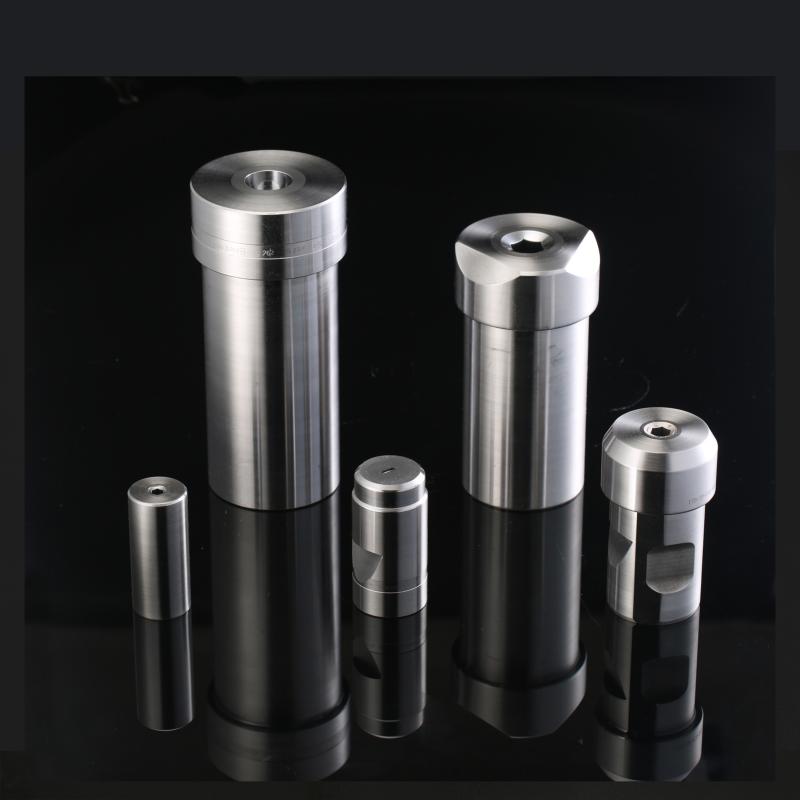The manufacturing industry is continuously evolving, driven by advancements in technology that improve efficiency, reduce costs, and enhance product quality. Punch Dies, critical tools in metalworking, have also seen significant innovation. The future of Punch Die technology looks promising, with emerging trends such as smart dies, 3D printing, and other innovations poised to revolutionize how these tools are designed, manufactured, and maintained. This article explores these trends and how they are expected to enhance the performance, durability, and efficiency of Punch Dies in the coming years.

1. Smart Punch Dies: Integrating IoT and Sensors
One of the most exciting trends in punch die technology is the integration of smart features using the Internet of Things (IoT) and sensor technology. Smart punch dies are equipped with sensors that monitor various parameters such as temperature, pressure, force, and wear. These sensors allow manufacturers to collect real-time data, enabling predictive maintenance and performance optimization.
Predictive Maintenance: By continuously monitoring the condition of the punch die, smart dies can predict when they are likely to wear out or fail. This helps manufacturers avoid unexpected downtime and reduce maintenance costs.
Enhanced Efficiency: Real-time data enables operators to make adjustments during production to optimize performance and reduce waste, ensuring a more efficient production cycle.
Extended Tool Life: With better monitoring of wear and stress on the die, smart punch dies can be maintained proactively, thus extending their service life and reducing the need for frequent replacements.
2. 3D Printing and Additive Manufacturing for Punch Dies
3D printing, also known as additive manufacturing, is another trend transforming punch die technology. This innovation enables manufacturers to produce complex and customized punch dies with greater precision and speed compared to traditional manufacturing methods.
Customization: 3D printing allows for the creation of punch dies with intricate shapes and features that would be difficult or impossible to achieve with conventional machining methods. This flexibility is particularly beneficial for industries requiring highly specialized dies.
Reduced Lead Time: Traditional die manufacturing can be time-consuming due to the need for intricate machining and tooling. 3D printing accelerates this process, enabling faster production of prototype and production-ready dies.
Cost-Effective Prototyping: With 3D printing, manufacturers can rapidly prototype new die designs and test them in real-world conditions before committing to mass production, reducing the risk of errors and expensive design revisions.
3. Advanced Materials for Enhanced Durability and Performance
Future punch dies will increasingly utilize advanced materials that offer superior durability, wear resistance, and heat resistance. These materials are essential for ensuring that punch dies maintain their performance over extended production runs, especially in industries such as automotive, aerospace, and electronics, where high precision and durability are critical.
Coatings and Surface Treatments: To improve the longevity and performance of punch dies, advanced coatings such as TiN (Titanium Nitride), DLC (Diamond-Like Carbon), and ceramic coatings will become more common. These coatings reduce friction, resist wear, and protect against corrosion, significantly extending the tool’s life.
Composite Materials: The development of composite materials that combine the benefits of different metals and ceramics will enable punch dies to endure extreme pressures and temperatures while maintaining precision. These materials will help reduce tool wear and improve efficiency in high-speed production environments.
4. Automation and Robotics in Die Handling and Maintenance
Automation has been a growing trend in manufacturing, and the future of punch dies is no exception. Robotic systems and automated machinery will increasingly be used to handle and maintain punch dies, reducing human error and improving overall efficiency.
Automated Die Changing: Robotic systems can automate the die-changing process, reducing downtime and ensuring that the right die is in place for each production run. This leads to more streamlined operations and faster turnaround times.
Robotic Die Inspection: Advanced robotic systems equipped with cameras and sensors can inspect punch dies for signs of wear and damage, ensuring that only properly maintained dies are used in production. This reduces the likelihood of defects and enhances product quality.
Minimized Human Error: Automation and robotics help reduce the risk of human error in die handling and maintenance, ensuring that processes are carried out with greater precision and consistency.
5. Integration with CAD/CAM Software for Precision and Efficiency
The integration of punch die design with Computer-Aided Design (CAD) and Computer-Aided Manufacturing (CAM) software is becoming increasingly advanced. This integration allows for the precise design, simulation, and manufacturing of punch dies, streamlining the production process.
Design Optimization: CAD software enables designers to create detailed 3D models of punch dies, optimizing them for performance and manufacturability. CAM software then translates these models into production-ready specifications, ensuring that the die is manufactured exactly as intended.
Simulation and Testing: Before physical prototypes are created, manufacturers can use CAD/CAM software to simulate the behavior of punch dies under real-world conditions, ensuring that they will perform as expected. This simulation reduces the risk of costly errors and enhances efficiency by identifying potential issues early in the design process.
6. Sustainability in Punch Die Manufacturing
Sustainability is an increasingly important consideration in modern manufacturing, and punch die technology is no exception. Future developments in punch dies will focus on reducing their environmental impact, including minimizing energy consumption, waste, and the use of harmful materials.
Eco-Friendly Materials: Manufacturers are exploring the use of more sustainable materials, such as recycled metals and non-toxic coatings, to produce punch dies that have a lower environmental impact.
Energy-Efficient Manufacturing: Advanced manufacturing techniques, including additive manufacturing and precision machining, will help reduce the energy consumption associated with die production, contributing to a more sustainable manufacturing process.
Recycling and Reusing Dies: The future of punch die technology will involve better systems for recycling and reusing old dies, reducing waste and the need for raw materials.
7. Improved Heat Dissipation Technologies
As manufacturing speeds increase, the temperature generated by high-speed stamping or punching operations becomes a major concern. Excessive heat can lead to die wear, deformation, and failure, which in turn reduces production efficiency.
Enhanced Cooling Systems: New designs and innovations in cooling systems, such as integrated cooling channels in the punch die itself, will help manage and dissipate heat more effectively.
Thermal Management Materials: The use of advanced thermal management materials will enable punch dies to maintain their strength and precision even in high-temperature environments, ensuring consistent performance and longer tool life.
The future of punch die technology is bright, with innovations such as smart dies, 3D printing, advanced materials, and automation poised to enhance production efficiency, performance, and durability. As manufacturers strive to meet the demands of modern industries, these advancements will help them stay competitive, reduce costs, and improve overall product quality. By embracing these trends, manufacturers can optimize their processes and create punch dies that not only perform better but also last longer, making a significant impact on the industry’s future.











